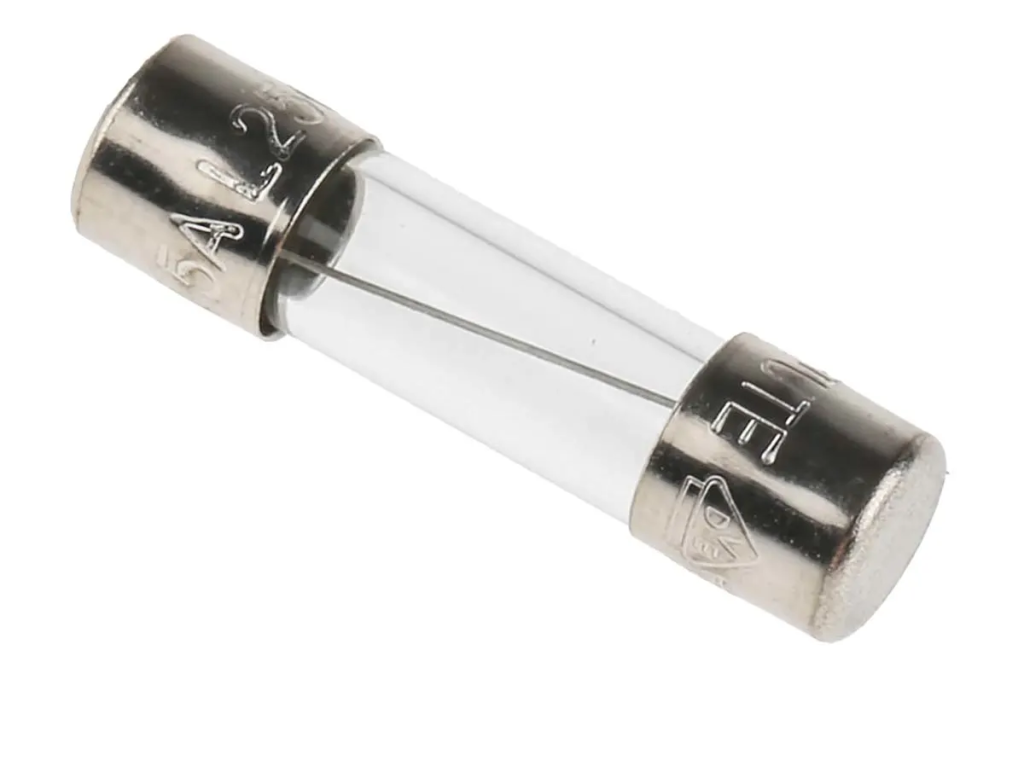Fuses are basic safety devices widely deployed in electrical circuits for excess current or overcurrent protection. If a stronger than expected current surges through, the fuse will blow and break the circuit, minimising heat damage and reducing the risk of electrocution or fire. This is called tripping a circuit. The point at which a fuse blows is called its breaking capacity and once it has blown, it interrupts current flow and becomes an open fuse.
Overcurrent can be caused by short circuits (in which current travels down the wrong path), configuration faults, electrical arcs, and similar issues. The resulting heat can be sufficient to melt cable insulation.

Difference Between a Fuse and a Circuit Breaker
Fuses and circuit breakers serve a very similar function – both break electrical circuits in the event of a current surge or short circuit. However, there is a crucial difference. Circuit breakers are switches, and like all switches, they can be reset once they have been flipped. Most fuses, though, can only be used a single time. Once they have blown, they must be replaced. They are, by definition, a weak link – entirely by design.
Fuses are inexpensive and can be replaced (pulled) quickly and easily for minimum downtime. It is important to ensure that you fit a fully compatible model with the correct current rating for your device. This figure indicates the level of current the fuse will accept before blowing.
There are other relevant metrics. The speed rating indicates how quickly the fuse will blow in response to excess current; a more sensitive fuse is a safer option. Voltage drop is the voltage lost through cables due to impedance – essentially when the voltage at the end of a run of cable is lower than at the beginning. If too much is lost, some low equipment may not function correctly.
It is also sensible to check the amount of energy released by the fuse when blowing. Too much could cause damage to the device and even be hazardous.
Fuse Box and Fuse Carrier
Fuse boxes can essentially be explained as control panels for the electrical system in a particular location. They are the location at which incoming power is divided into separate circuits. Typically, they feature a central switch controlling:
- The electricity supply to the entire property
- A number of residual current devices (RCD) which instantly disconnect electrical circuits to prevent shock or injury
- Fuses or circuit breakers for each individual electrical circuit
Fuse boxes have a number of alternative names, including control board panels, distribution boards, breaker panels, fuse boards, and fuse panels. Domestic fuse boxes are frequently referred to as consumer units.

What is a Switch Fuse Unit?
Switch fuse units distribute current while shielding cables and devices from the damage that would be caused by power fluctuations along a particular electrical circuit. Switch fuse units are used in industrial and commercial buildings as well as domestic properties.
There are three principal varieties about fuse and fuse carrier:
- Rewirable fuse units feature a bank of fuses or circuit breakers in a durable steel enclosure, along with highly conductive nickel or silver contacts. Different amp ratings are available, including 16, 32, 63, 100 & 200A
- Porcelain fuse units provide first-rate protection from electrical overloads and short circuits. A range of fuses are available to suit different power ratings
- Double Break Combination Fuse Switch Units are a higher capacity model used to ensure an uninterrupted power supply to machinery and appliances. A double break, also known as a double switch, is a safety measure that requires two poles or switches to be activated to open or close a circuit
